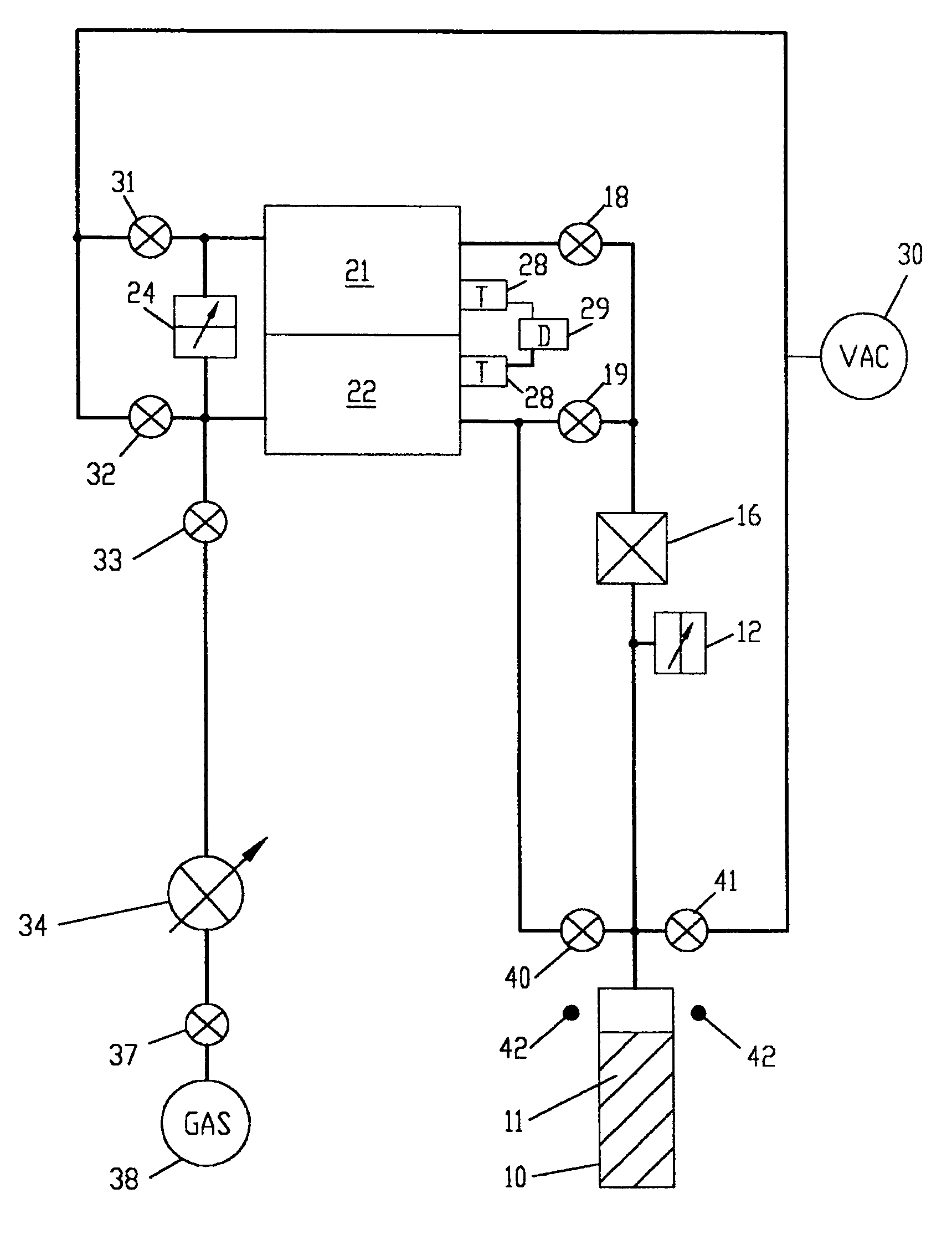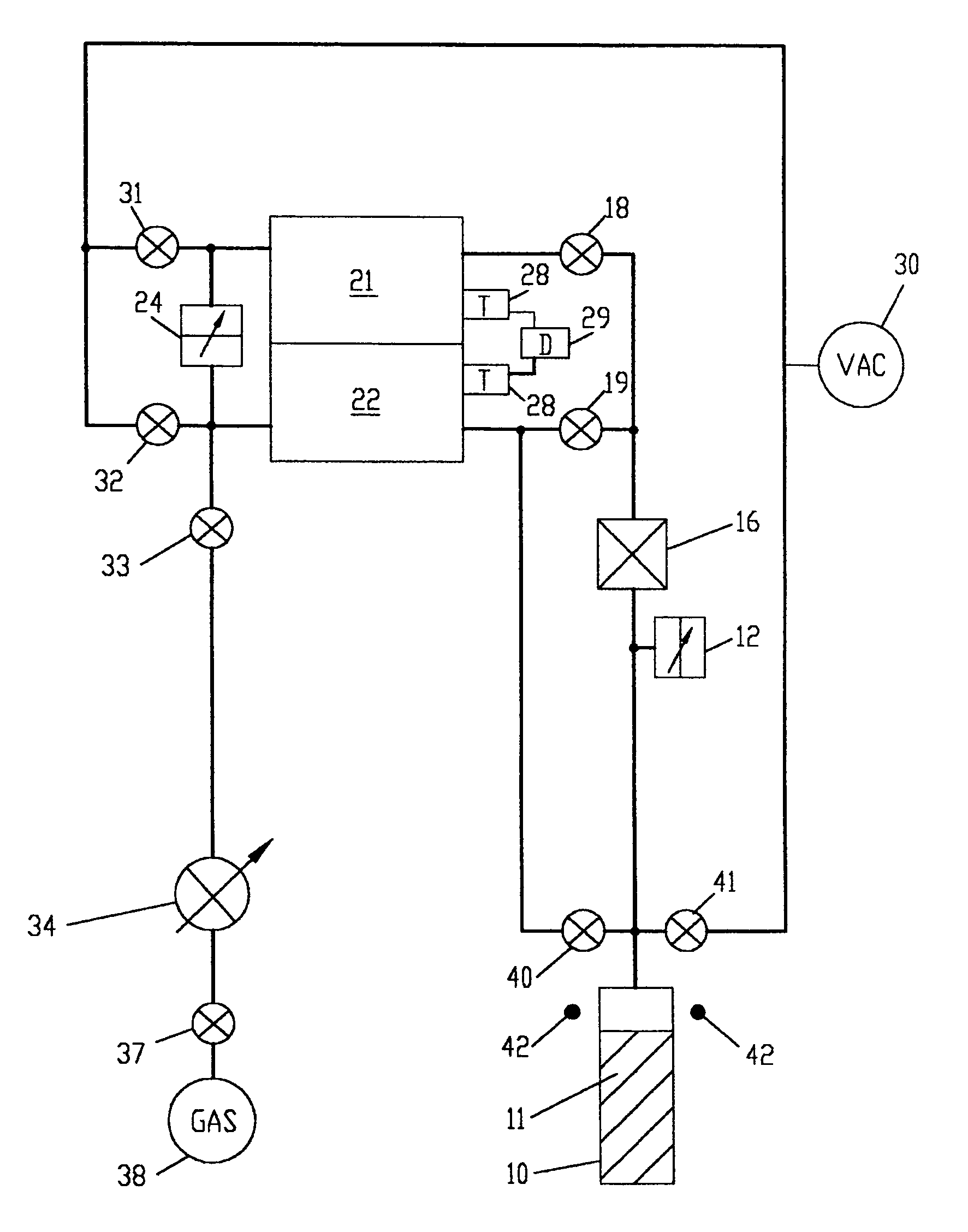Method and apparatus to measure gas amounts adsorbed on a powder sample
- Summary
- Abstract
- Description
- Claims
- Application Information
AI Technical Summary
Benefits of technology
Problems solved by technology
Method used
Image
Examples
example
[0093]An example of a nitrogen adsorption and desorption experiment follows. The free space in sample cell 10 which is the volume of sample cell 10 not occupied by sample 11, is first determined. Then, the adsorption isotherm and the desorption isotherm are measured. In the following, the volume of supply chamber 21 includes the volume of conduits to gas flow control means 16, and the volume of free space in sample cell 10 includes the volume of conduits to gas flow control means 16. The volume of supply chamber 21 is already precisely predetermined from previous measurements.
1. Measurement and Calculation of the Free Space in Sample Cell 10.
[0094]The free space in sample cell 10 is determined by gas law relationships using a three step procedure. In the first step, the free space at ambient temperature of sample cell 10 without any sample is measured. Empty sample cell 10 is isolated from supply chamber 21 and reference chamber 22 and sample cell 10 is evacuated. Supply chamber 21 ...
PUM
 Login to View More
Login to View More Abstract
Description
Claims
Application Information
 Login to View More
Login to View More - R&D Engineer
- R&D Manager
- IP Professional
- Industry Leading Data Capabilities
- Powerful AI technology
- Patent DNA Extraction
Browse by: Latest US Patents, China's latest patents, Technical Efficacy Thesaurus, Application Domain, Technology Topic, Popular Technical Reports.
© 2024 PatSnap. All rights reserved.Legal|Privacy policy|Modern Slavery Act Transparency Statement|Sitemap|About US| Contact US: help@patsnap.com










